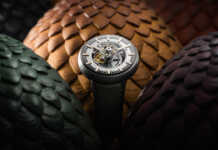
Iconic Jewellery store Tiffany & Co. is switching hands in one of the industry’s largest and boldest acquisitions to date. French-owned LVMH is in the process of the landmark purchase and already attempted to acquire Tiffany back in October for a reported 14.5bn. The bid didn’t land and LVMH returned with a reported 16.2bn. The deal is set to be finalized by the middle of 2020.
French company LVMH, run by chairman Bernard Arnault for nearly 32 years, already has a large portfolio of Luxury Brands under its belt including Louis Vuitton, Givenchy, Dior, Moët & Chandon, Bulgari, Kenzo and Marc Jacobs, to name a few. As well as brands in the wine, spirit, fashion, leather, perfume, cosmetics and watch categories including Dom Pérignon, Veuve Clicquot, Krug, TAG Heuer and Hublot.
Tiffany & Co., known for its engagement rings and white diamond necklaces will bolster the LVMH portfolio even further. LVMH will pay $135 per share in cash and expects the Tiffany brand will boost LVMH’s smallest business, the jewellery and watch division, helping the company to expand into one of the fastest-growing categories in the industry. Hard luxury – watches and jewellery – is the only sector where LVMH is not a leader. In addition, LVMH aims to restore Tiffany’s shine, whose revenues have slowed due to lower tourist spending in China and the depreciation of the renminbi, the trade war between the U.S. and China, as well as the protests in Hong Kong. Nonetheless, LVMH’s presence in China will help Tiffany to expand in the region where the brand is well-recognized, tapping into the spending power in the country.
Bernard Arnault has said: “We have immense respect and admiration for Tiffany and intend to develop this jewel with the same dedication and commitment that we have applied to each and every one of our Maisons.”
And Rogerio Fujimori, an analyst at Royal Bank of Scotland, has said: “Tiffany could be highly complementary to LVMH’s hard luxury portfolio because Tiffany has a broader consumer base than Bulgari, thanks to its higher exposure to more affordable price points given its well-established silver jewellery offer.”
Charles Lewis Tiffany, a 25-year-old entrepreneur, opened his first Tiffany store in 1837 (in downtown Manhattan) on a 1,000 dollar loan from his father. The shop originally sold stationery and fancy goods and later expanded to include historic gems, jewellery, silverware and artwork. It became Tiffany, Young, & Ellis in 1841 and in 1848 the firm began to manufacture its own jewellery. By 1850 Tiffany opened a branch in Paris.
Tiffany is known the world over for its iconic robin’s egg blue packaging and, of course, Tiffany is synonymous with Breakfast at Tiffany’s, starring Audrey Hepburn.
Today, Tiffany has more than 300 stores worldwide and employs more than 14,000 people.
The evolution of Tiffany is certainly the realization of the American dream buzzing through America in the middle of the 18th century and LVMH’s acquisition marks the definitive move to expand Tiffany’s presence globally.
LVMH’s share price opened 1.8 percent higher after the agreement was announced and ended trading up 2.3 percent.
As the world’s biggest luxury groups are competing for the younger millennial demographic and capitalizing on high-spending Chinese consumers, the sky’s the limit and LVMH’s bold move is a testament to that.

















